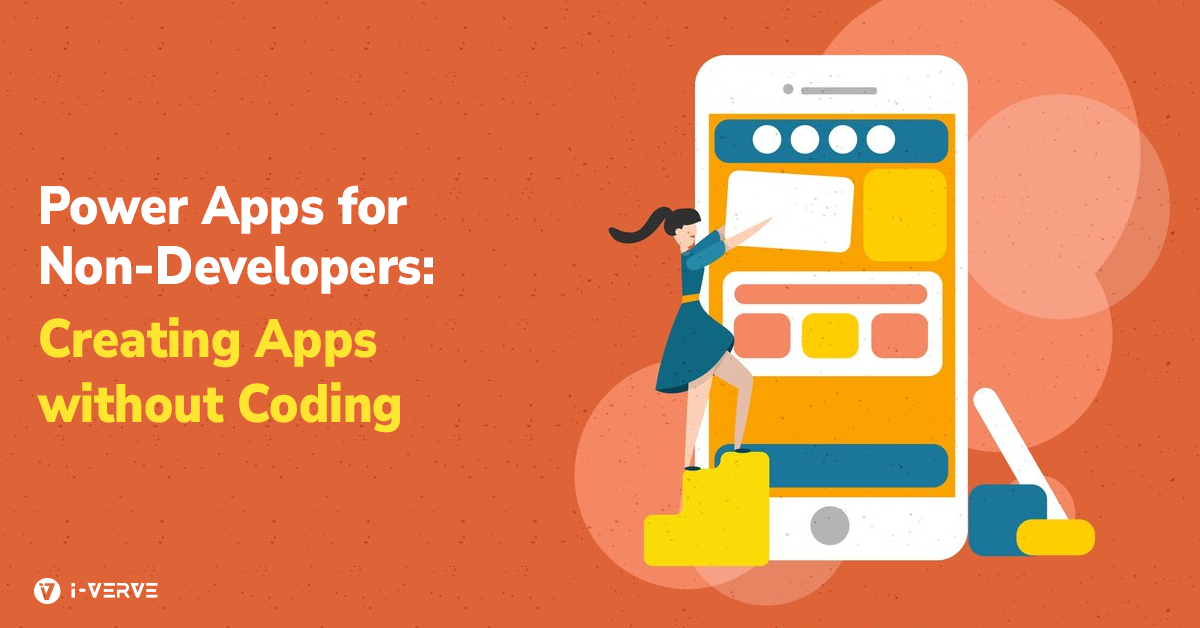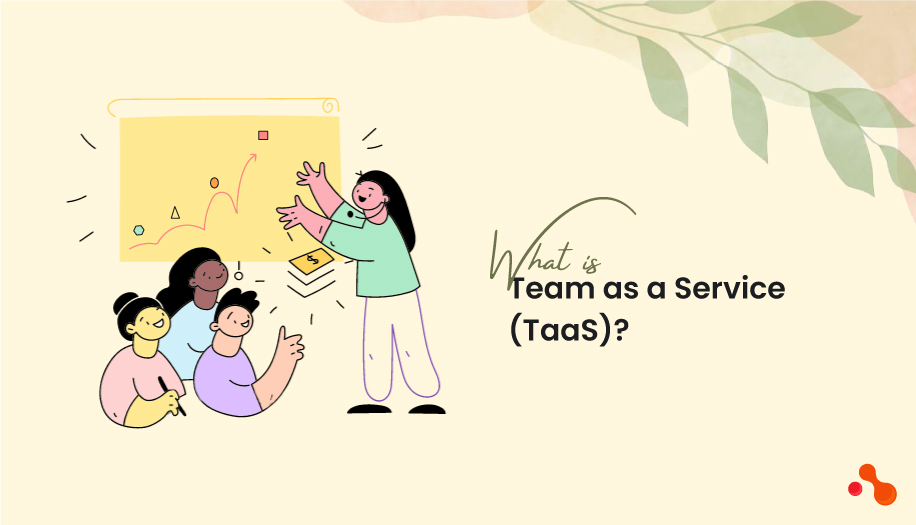Introduction
In a transformative era of technology, the accessibility and empowerment of non-developers in the realm of application creation have reached unprecedented heights. This blog, “Power Apps for Non-Developers,” embarks on a journey to unveil the revolutionary landscape of creating applications without coding constraints. Join us in unravelling the possibilities of app creation for everyone, regardless of coding expertise.
The Empowerment of Non-Developers
In the dynamic landscape of technology, the rise of low-code and no-code development tools has ushered in a new era of empowerment for non-developers. Without extensive coding backgrounds, these individuals can now actively participate in application development, breaking traditional barriers and contributing to digital innovation.
bjectives of the Blog
This blog explores non-developers’ empowerment through Power Apps, a leading low-code platform. We provide insights, guidance, and real-world examples to inspire and guide non-developers in creating impactful applications without extensive coding.
The Rise of Low-Code and No-Code Development
Defining Low-Code and No-Code Development
Low-code and no-code have emerged as transformative approaches in the evolving application development landscape. They are redefining how we create software solutions.
Low-Code Development:
Low-code platforms streamline application development by offering visual interfaces and pre-built components. They enable developers to design, customize, and deploy applications with minimal manual coding, significantly accelerating development timelines.
No-Code Development:
No-code platforms take simplicity to the next level by allowing individuals with no formal coding background to create functional applications. These platforms typically provide a visual, drag-and-drop interface, empowering users to build applications through intuitive design rather than traditional coding.
The Evolution of Application Development
Application development has evolved from traditional coding to low-code and no-code approaches, simplifying tasks and democratizing development. Standard coding demanded extensive training, while low code introduced visual interfaces. The recent no-code revolution allows individuals without coding backgrounds to participate, actively shaping the current state of application development.
Overview of Power Apps
Introducing Microsoft Power Apps
Microsoft Power Apps revolutionizes application development, providing an accessible, user-friendly environment for individuals without coding backgrounds. It fosters collaboration and innovation, democratizing app creation.
Key Features Making Power Apps Non-Developer Friendly
Microsoft Power Apps empowers non-developers with a user-friendly drag-and-drop interface, seamless data integration, and diverse app types and templates. It’s non-developer-friendly, breaking traditional barriers to active participation in app development.
Getting Started with Power Apps
Setting Up a Power Apps Environment
Whether you are a business user seeking to automate tasks, a developer exploring low-code solutions, or anyone passionate about building innovative applications,” Getting Started with Power Apps ” is your key to unlocking a world of possibilities. Setting up an environment for app development involves critical steps:
- Access Power Apps: Start by accessing Power Apps via the portal or within Microsoft 365.
- Environment Creation: Create a dedicated environment for building, testing, and deploying apps without affecting production.
- Environment Configuration: Configure settings, including security, data sources, and connections, tailored to app project requirements.
- User Access Management: Define and manage user access, assigning roles and permissions for collaborative development.
- Connect to Data Sources: Connect to relevant platforms like CDS, SharePoint, or SQL Server.
- Choose App Type and Template: Select an app type (Canvas, Model-driven, or Portal) and a template aligned with project goals, streamlining the creation process.
These steps lay the foundation for a successful app development journey, empowering non-developers within Power Apps.
Choosing App Types and Templates
Choosing App Types and Templates in Power Apps involves selecting the structure and design of your application. Here’s a breakdown:
App Types:
– Canvas App: Flexible design with drag-and-drop features for custom interfaces and user experiences.
– Model-Driven App: A data-centric, generating app structure based on models suitable for complex business applications.
– Portal: Extends Power Apps to external users, enabling website creation with dynamic content.
- Templates:
– Power Apps offers diverse pre-built templates, including expense tracking, project management, and inventory management. These templates provide a customizable starting point, streamlining app development for non-developers.
Building Apps with a Visual Interface
Drag-and-Drop Interface
Power Apps’ Drag-and-Drop Interface simplifies app creation for non-developers by intuitively manipulating elements on a canvas. This streamlines development and enhances the user experience.
Customizing App Layout and Design
- Overall aesthetics of the app, including color schemes, fonts, and branding elements.
- Non-developers can customize the app’s look to align with organizational branding and create visually appealing user interfaces.
Customizing app layout and design empowers non-developers to create professional-looking applications with a personalized touch, enhancing the user experience without requiring extensive coding skills.
Connecting Data Sources
Integration with Common Data Service (CDS)
Connecting Power Apps to the Common Data Service (CDS) involves exploring CDS capabilities as Microsoft’s unified data storage solution. Establishing this connection allows Power Apps to leverage CDS’s standardized data schema, ensuring efficient data management. Learn about CDS entities, representing various data types to structure and organize data within the app, enhancing performance.
Connecting to External Data Sources
Connecting to external data sources involves language-specific steps. Use SQLAlchemy in Python for relational databases, and for NoSQL databases like MongoDB, use PyMongo. Interact with web APIs through HTTP requests, handle file formats with language-specific libraries, and use SDKs for cloud services. In frameworks like Django or Express.js, utilize built-in or third-party libraries for secure API integration. Always refer to documentation for detailed instructions.
Automating Workflows with Power Automate
Overview of Power Automate Integration
Connecting apps and services, Microsoft Power Automate streamlines workflow automation within the Power Platform. Its visual interface enhances efficiency and collaboration across platforms.
Creating Automated Processes without Code
Automate tasks seamlessly with no-code platforms like Microsoft Power Automate, Zapier, and AppSheet, enabling users to design workflows visually. Streamline processes, enhancing productivity without deep programming knowledge.
Collaboration and Sharing
Collaborative App Building
Collaborative app building involves diverse individuals working together on low-code or no-code platforms like Microsoft Power Apps, Mendix, and OutSystems. This approach accelerates development, fostering cross-functional teamwork and aligning the final product with business needs through iterative feedback from contributors with various skill sets.
Sharing and Deployment
Sharing involves collaborative code development and API sharing. The deployment includes CI/CD for automated workflows, containerization, cloud deployment, serverless options, strategic updates, monitoring, security measures, and transparent user communication.
Real-World Use Cases
Case Study: Company A’s Success with Power Apps
Company A achieved success using Power Apps, streamlining processes without extensive coding. The low-code platform allowed rapid app development, enhancing efficiency. Power Apps empowered non-developers, accelerating innovation and delivering tailored solutions, contributing to overall business success.
Diverse Applications Created by Non-Developers
Non-developers leverage low-code platforms like Microsoft Power Apps to create applications addressing specific business needs without traditional coding. This democratization accelerates innovation and enables diverse roles in digital transformation.
Training and Resources for Skill Development
Importance of Training for Non-Developers
Training non-developers is essential for empowerment, efficiency, and innovation. It fosters agility, cost savings, and cross-functional collaboration. With the right skills, non-developers contribute to digital transformation, problem-solving, and user adoption, creating a culture of innovation and efficiency within the organization. This investment ensures employees can actively participate in development processes, enhancing overall digital readiness and organizational agility.
Online Resources and Learning Platforms
Numerous online resources and learning platforms, such as Coursera, Udacity, and Khan Academy, offer diverse courses, tutorials, and certifications. These platforms empower individuals to acquire new skills, enhance knowledge, and stay abreast of the latest developments in various fields.
Challenges and Solutions
Common Challenges Faced by Non-Developers
Non-developers often need help with challenges like overcoming the learning curve for new technologies, grappling with complex coding concepts, and navigating intricate development tools. Additionally, they may encounter difficulties in troubleshooting errors and adapting to rapidly evolving technology landscapes, highlighting the importance of tailored training and ongoing support.
Solutions and Tips for Overcoming Challenges
Overcome non-developer challenges with tailored training, user-friendly tools, and mentorship. Foster collaboration through community engagement, provide learning paths and interactive workshops, ensure continuous support, and celebrate successes.
Future Trends in Non-Developer App Development
Advancements in Low-Code and No-Code Technologies
Low-code and no-code technologies are rapidly advancing, offering enhanced capabilities for users to build applications with minimal coding. Artificial intelligence integrations, expanded libraries of pre-built components, and improved collaboration features are shaping these platforms. These advancements democratize app development, enabling a broader range of users to contribute to digital innovation.
Preparing for Evolving Tools and Features
To prepare for evolving tools and features, stay informed about industry trends, regularly update skills, and continuously learn. Embrace training opportunities by changing platforms and exploring new features to enhance proficiency. Being adaptable and proactive ensures readiness for the dynamic landscape of emerging technologies.
Conclusion
In the technology industry, non-developers, including marketing and sales professionals attracting customers and customer service representatives ensuring satisfaction, play pivotal roles contributing significantly to the bottom line. Recognizing their diverse contributions and empowering them through learning resources and a supportive culture fosters innovation and risk-taking, enabling valuable contributions to organizational goals, including Power App development services.




